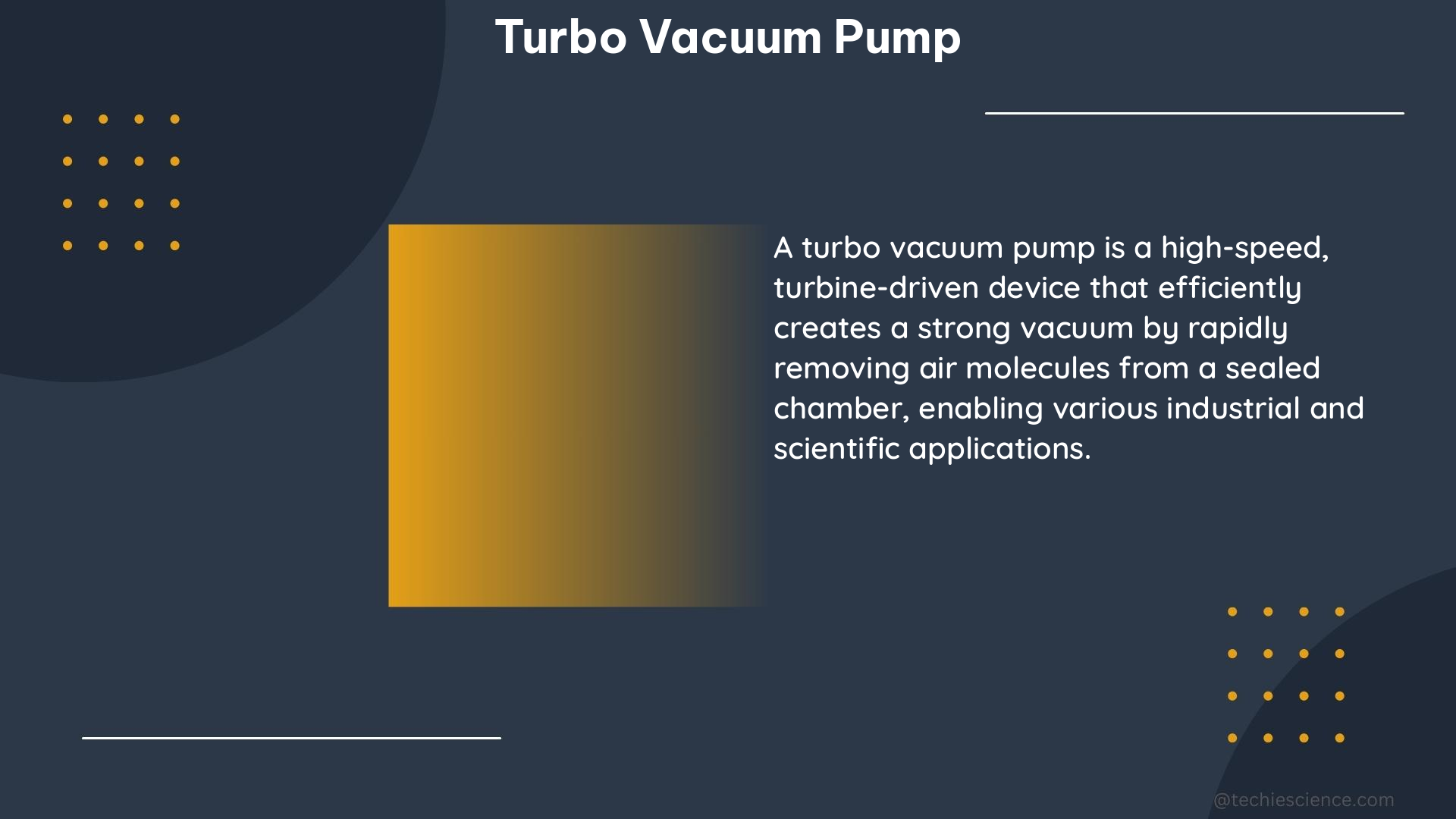Turbo vacuum pumps, also known as turbomolecular pumps, are high-performance vacuum pumps that are widely used in various industrial and research applications. They are renowned for their exceptional pumping speed, compression ratio, and ability to generate high and ultra-high vacuums, making them indispensable tools in numerous fields.
Pumping Speed: The Measure of Efficiency
The pumping speed of a turbo vacuum pump is a crucial parameter that determines its ability to handle the volume flow rate of gas. This is typically measured in liters per second (l/s) or cubic meters per hour (m³/h). For instance, the Pfeiffer Vacuum HiPace turbopump boasts a remarkable pumping speed of up to 3,000 l/s, allowing it to efficiently evacuate large volumes of gas.
Compression Ratio: The Key to Achieving High Vacuums

The compression ratio of a turbo vacuum pump is a measure of its effectiveness in compressing gas. This parameter is typically measured at zero throughput, meaning when the pump is not handling any gas. The compression ratio is a vital factor in achieving high and ultra-high vacuums. The Pfeiffer Vacuum HiPace turbopump, for example, has a compression ratio of up to 10^11 for hydrogen and up to 10^15 for heavier gases, making it an exceptional choice for demanding applications.
Backing Pump Compatibility: Ensuring Optimal Performance
Turbo vacuum pumps require a backing pump to handle the gas that is not compressed by the turbo pump. The compatibility of the turbo pump with the backing pump is an essential consideration for achieving high and ultra-high vacuums. The Pfeiffer Vacuum HiPace turbopump is compatible with a wide range of backing pumps, including oil-sealed rotary vane pumps, dry scroll pumps, and roots pumps, providing users with flexibility and versatility in their vacuum system design.
Gas Throughput: Handling High Loads with Ease
The gas throughput of a turbo vacuum pump is a measure of the amount of gas that the pump can handle over a given period of time. This is typically expressed in pascal-cubic meters per second (Pa·m³/s) or standard cubic centimeters per minute (sccm). The Pfeiffer Vacuum HiPace turbopump, for instance, has a gas throughput of up to 1,000 Pa·m³/s for nitrogen and up to 10,000 sccm for hydrogen, making it capable of handling high gas loads with ease.
Operating Conditions: Optimizing for High Performance
The operating conditions of a turbo vacuum pump, such as the rotation speed and temperature, are crucial for achieving high and ultra-high vacuums. The Pfeiffer Vacuum HiPace turbopump can operate at a rotation speed of up to 90,000 rpm and a temperature of up to 120°C, ensuring optimal performance in a wide range of applications.
Safety Certification: Ensuring Secure Operation
Turbo vacuum pumps are subject to stringent safety regulations and certifications to ensure safe operation. The Pfeiffer Vacuum HiPace turbopump, for example, is certified by TÜV Rheinland and complies with UL 61010 and Semi S2 guidelines, providing users with the confidence that their vacuum system meets the highest safety standards.
In conclusion, turbo vacuum pumps are high-performance vacuum pumps that offer exceptional pumping speed, compression ratio, and the ability to generate high and ultra-high vacuums. By understanding the key parameters, such as pumping speed, compression ratio, backing pump compatibility, gas throughput, operating conditions, and safety certification, users can make informed decisions when selecting the right turbo vacuum pump for their specific applications.
Reference:
– Pfeiffer Vacuum Turbopumps
– How Does a Turbomolecular Pump Work?
– Pumping High Gas Loads with Turbomolecular Pumps

The lambdageeks.com Core SME Team is a group of experienced subject matter experts from diverse scientific and technical fields including Physics, Chemistry, Technology,Electronics & Electrical Engineering, Automotive, Mechanical Engineering. Our team collaborates to create high-quality, well-researched articles on a wide range of science and technology topics for the lambdageeks.com website.
All Our Senior SME are having more than 7 Years of experience in the respective fields . They are either Working Industry Professionals or assocaited With different Universities. Refer Our Authors Page to get to know About our Core SMEs.